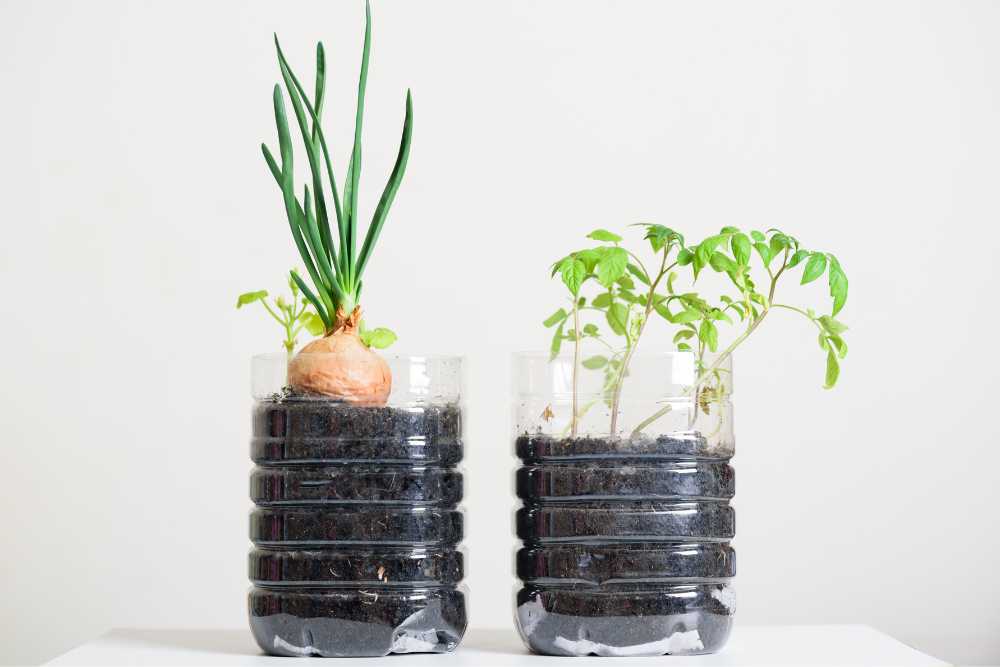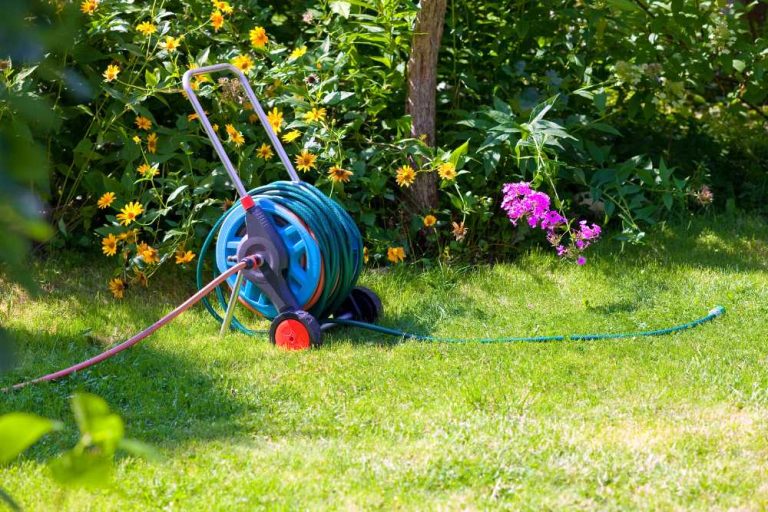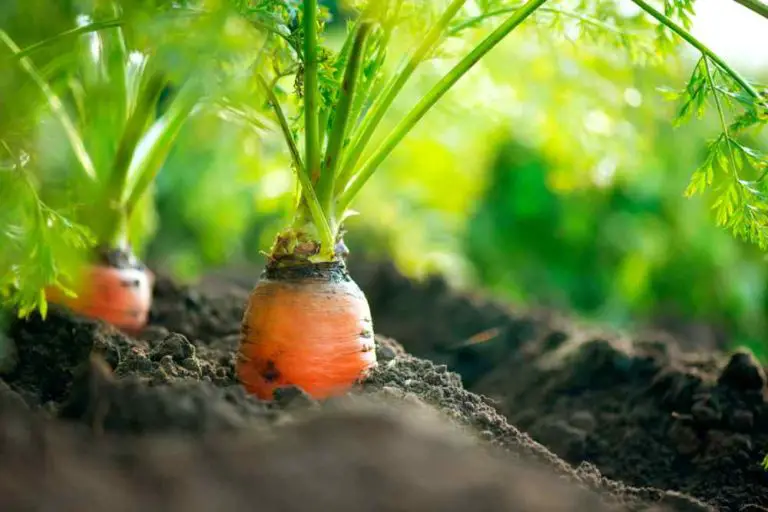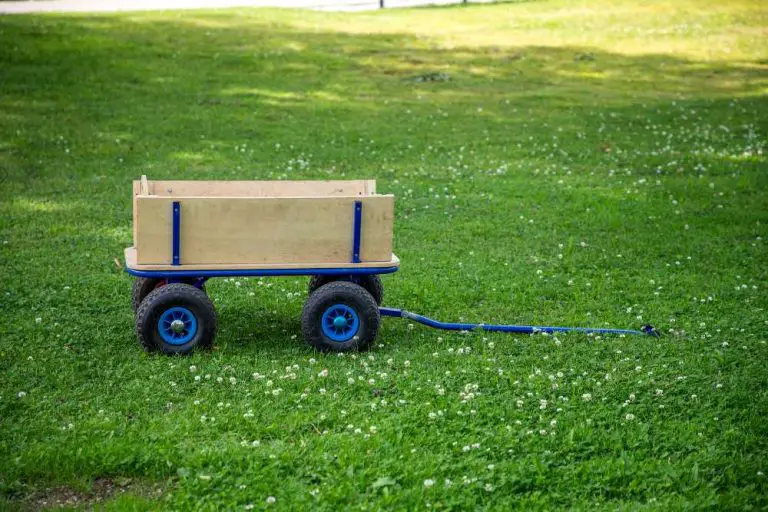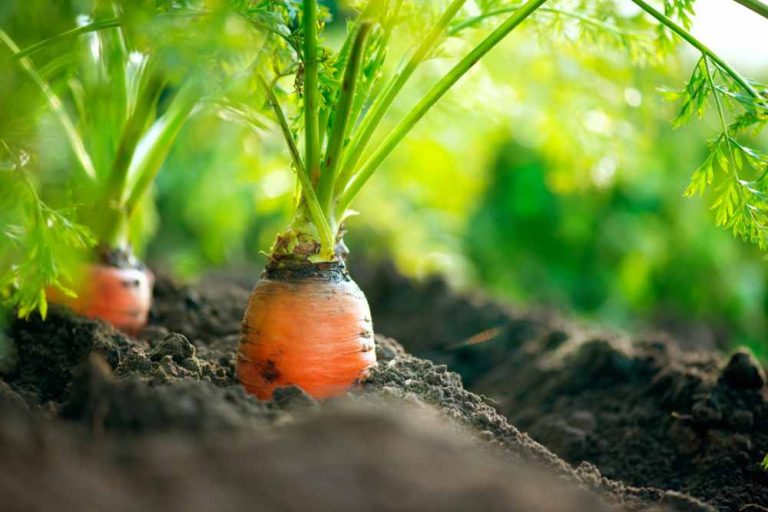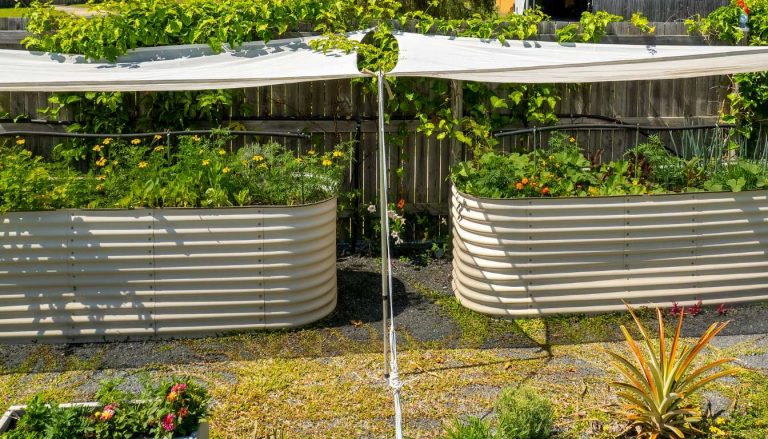5 Creative Container Gardening Ideas for Small Spaces
Even if you don’t have a lot of outdoor space, container gardening is a great way to bring some greenery into your home. The smallest areas may be converted into a lovely garden with imagination and careful design. In this article, we’ll explore some of the best container gardening ideas for small spaces.
Why Choose Container Gardening for Small Spaces?
Container gardening is like having a mini-paradise at your fingertips. It’s a versatile and easy way to grow plants, flowers, and veggies without needing a huge outside area. Plus, it allows you to create your own mini garden oasis, adding a touch of nature and charm to urban living.
You can turn any little space into a beautiful garden with proper containers and just a little creativity. Let’s look at some great ideas and pointers for making your tiny space container garden blooming a success.
Choosing the Right Containers
Before we dive into the exciting world of container gardening ideas, let’s talk about selecting the proper containers. When space is limited, choosing suitable pots and planters may make all the difference. Here are some pointers to help you:
- Size: Consider the size of your available space and choose containers that fit comfortably within it. Go for compact, space-saving containers that won’t overwhelm your area.
- Drainage: Ensure your containers have proper drainage holes to prevent overwatering and root rot. To increase drainage, put a layer of gravel or small rocks at the bottom of the pot.
- Material: Get creative with your container choices! While classic terracotta pots are timeless, you can experiment with ceramic, metal, or recycled materials like old tires or wooden crates for a unique look.
Benefits of Container Gardening
Before we dive into container gardening, let’s take a moment to appreciate the benefits it offers:
- Space Efficiency: Don’t let a lack of space deter your gardening dreams. Container gardening allows you to maximize every inch of your balcony, patio, or windowsill.
- Flexibility: Whether rearranging your living space or moving to a new home, container gardens are portable and easy to relocate.
- No Weeding Required: Bid farewell to the chore of weeding! Container gardening minimizes the risk of invasive plants taking over your space.
- Climate Control: In regions with extreme weather conditions, containers offer the advantage of controlling the soil and plant environment for optimal growth.
Creative Gardening Ideas For Small Spaces
`1. Vertical Gardens
Vertical gardens, also known as living walls or green walls, are an innovative and visually stunning way to transform your small space into a lush and vibrant oasis. These vertical displays save valuable floor space and offer your living area a unique and eye-catching element.
There are different types of vertical gardens to suit various preferences and space limitations. One popular option is the modular system, where individual plant containers are attached to a frame, offering flexibility in rearranging and maintaining the plants. Another type is the pocket system, where plants are grown in pockets or pouches affixed to the wall. Woolly pockets, made of felt, are a common choice for this style.
– Selecting Plants for Vertical Gardens
Consider the amount of sunshine your area receives, the local temperature, and the watering requirements when selecting plants for your vertical garden. Choose a mix of cascading, trailing, and upright plants to create a visually appealing arrangement. Popular choices for vertical gardens include ferns, pothos, spider plants, and succulents.
Maintaining Your Vertical Garden
Proper maintenance is essential to keep your vertical garden thriving. Regularly inspect the plants for signs of pests or diseases and promptly address any issues. Be mindful of watering needs, as vertical gardens can dry out faster than traditional gardens. Consider using an irrigation system to ensure consistent and adequate watering.
– DIY or Pre-Made Green Walls
You have the option to create your own vertical garden or purchase pre-made green wall systems. DIY projects allow for a personalized touch and the satisfaction of creating something unique. However, pre-made systems often come with built-in irrigation and may be easier to install for those new to vertical gardening.
– Benefits of Vertical Gardens
Vertical gardens offer numerous benefits beyond their aesthetic appeal. They can improve indoor air quality by filtering pollutants and releasing oxygen. Additionally, green walls can help insulate buildings, reducing energy consumption and improving the microclimate. Vertical gardens can contribute to the well-being and connection with the nature of urban dwellers.
– Tips for Successful Vertical Gardening
To ensure the success of your vertical garden, consider the following tips:
- Start with a sturdy support structure: Ensure the wall or frame can handle the weight of the plants and soil.
- Choose appropriate plants: Select plants well-suited to your specific environmental conditions.
- Provide adequate drainage: Proper drainage is crucial to prevent soggy roots and potential damage to the wall or frame.
- Regular pruning: Trim and prune the plants to maintain the desired shape and avoid overcrowding.
- Fertilize as needed: A balanced liquid fertilizer provides essential nutrients for healthy plant growth.
2. Window Boxes
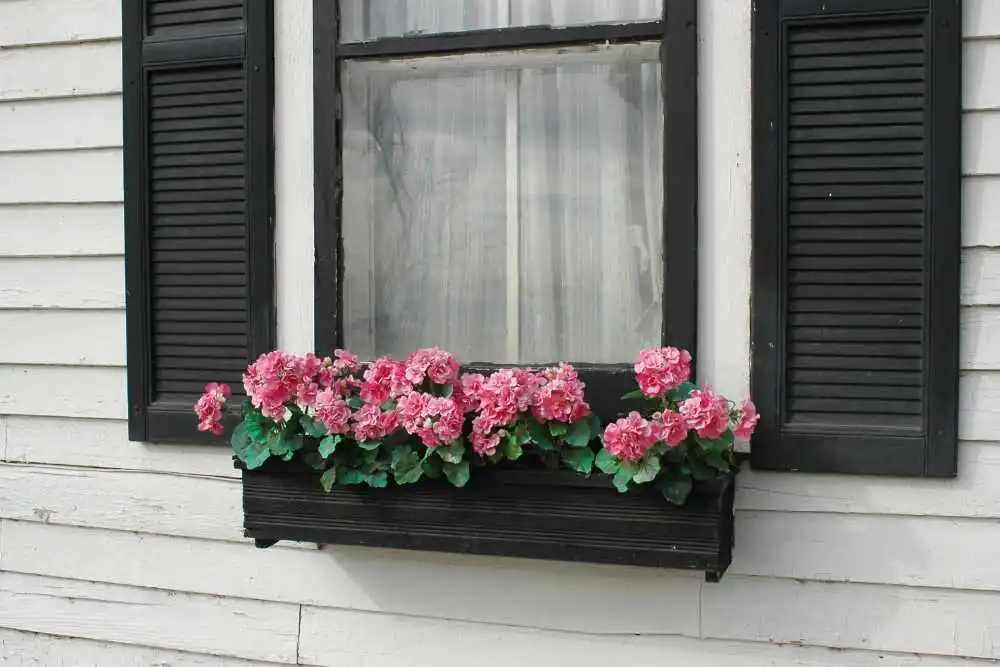
Window boxes are a charming and versatile option for small-space gardening, particularly for those who wish to bring a touch of nature closer to their living areas. These simple yet effective containers add a delightful splash of color and greenery to the exterior of your home, creating an inviting and picturesque view from both inside and outside.
Window boxes have a timeless appeal that can instantly elevate the exterior aesthetics of any home. Their classic and elegant design complements various architectural styles, from traditional to modern. Apart from adding beauty to your home, window boxes also serve as a platform for creativity, allowing you to experiment with different plant combinations and seasonal displays.
– Choosing the Right Window Box
Consider the material, size, and mounting options when selecting a window box. Common materials for window boxes include wood, metal, plastic, and fiberglass. Wooden window boxes offer a rustic charm, while metal and plastic options are lightweight and require less maintenance. Fiberglass window boxes are durable and weather-resistant, making them an excellent choice for long-lasting use.
– Selecting Plants for Window Boxes
The key to a successful window box display is choosing plants that thrive in your local climate and sunlight. For a classic and colorful look, mix a variety of flowering plants such as petunias, geraniums, impatiens, and marigolds. Incorporate trailing plants like ivy or sweet potato vine to add depth and drama to the arrangement. Alternatively, you can focus on a single type of plant for a more cohesive and minimalist appearance.
– Tips for Planting and Maintenance
Make sure your window box has sufficient drainage holes to avoid waterlogging and root rot. Fill the box with a high-quality potting mix with adequate nutrients and moisture retention. Water the plants regularly, especially during hot and dry periods. Deadhead faded flowers to encourage continuous blooming and trim back leggy growth to maintain a tidy appearance.
– Year-Round Beauty
One of the advantages of window boxes is the ability to change the display with the seasons. In spring, showcase an array of vibrant spring blooms like tulips and daffodils. During summer, choose heat-tolerant plants that can withstand the sun’s intensity. Add ornamental grasses and chrysanthemums in the fall for a warm and cozy feel. Consider evergreen plants and festive decorations in winter to add a touch of holiday charm.
– Enhancing Indoor Ambiance
Window boxes don’t just beautify the exterior of your home; they can also enhance the ambiance indoors. From inside your home, a well-maintained window box provides a picturesque view of nature, adding a sense of serenity and tranquility to your living spaces. It also allows natural light to filter in, brightening your interiors and creating a seamless connection with the outdoors.
– Bonus: Edible Window Boxes
For those passionate about gardening and cooking, consider creating an edible window box. Plant herbs like basil, thyme, mint, rosemary, and compact vegetables like cherry tomatoes and salad greens. Not only will you have fresh and flavorful ingredients at your fingertips, but the fragrant aroma of herbs will also permeate your home.
3. Hanging Baskets
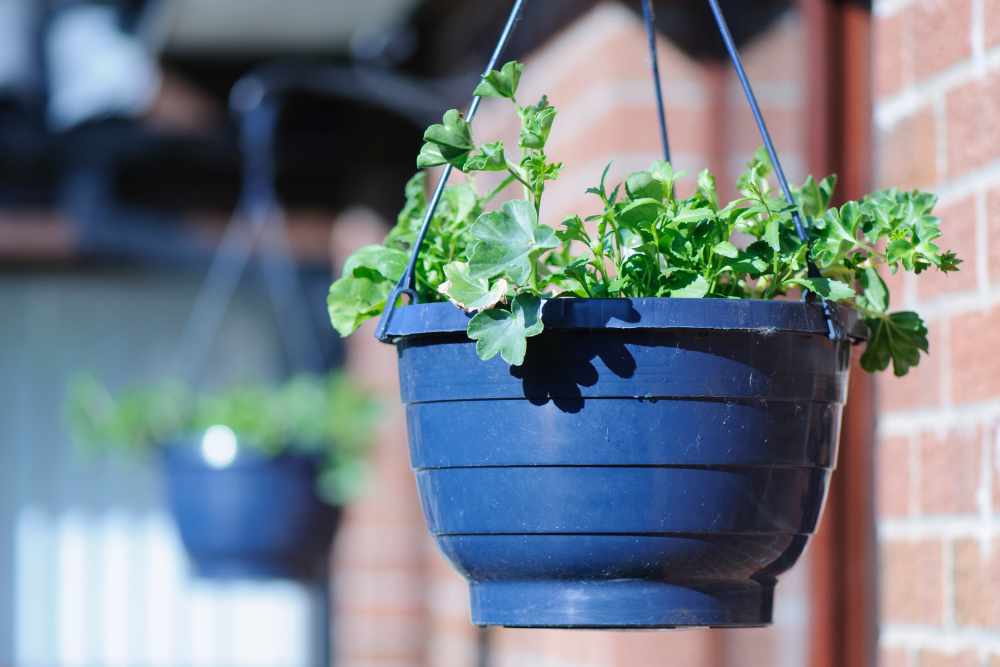
Hanging baskets are a delightful and space-saving solution for small-space gardening. These suspended containers add a burst of color and greenery to your surroundings and create an enchanting and whimsical atmosphere. Whether you hang them from hooks, railings, or overhead structures, hanging baskets add a touch of charm and elegance to any small space.
Hanging baskets have a captivating charm that draws the eye upward, making them an excellent choice for beautifying vertical spaces. They are particularly popular for balconies, porches, and even indoor areas with ample sunlight. The suspended arrangement allows plants to cascade and drape gracefully, creating a stunning visual impact.
– Selecting the Right Hanging Baskets
Hanging baskets come in various materials, including woven wicker, metal, plastic, and coir-lined options. Coir-lined baskets from coconut fiber provide excellent moisture retention and a natural look. When choosing the right size, consider the space where you plan to hang the basket and the type of plants you wish to grow.
– Choosing Plants for Hanging Baskets
The key to successful hanging baskets is selecting plants that thrive in containers and offer cascading or trailing growth habits. Flowers with long stems and vines work particularly well as they gracefully spill over the sides of the basket. Some popular choices include fuchsias, trailing petunias, lobelias, and bacopa. For a touch of greenery, consider trailing ivy or pothos plants.
– Planting and Caring for Hanging Baskets
When planting your hanging basket, ensure it has sufficient drainage holes to prevent waterlogging. Fill the basket with a well-draining potting mix. Be mindful of the watering needs of your chosen plants, as hanging baskets may dry out faster than traditional containers. Water regularly, especially during hot and dry periods, but avoid overwatering to prevent root rot.
– Creating Eye-Catching Combinations
Get creative and mix different plants with varying colors, textures, and bloom shapes to create eye-catching combinations in your hanging baskets. Combine complementary colors like purple and yellow or create a monochromatic arrangement for a more sophisticated look. Don’t be afraid to experiment and switch up the plants with the changing seasons for a dynamic and ever-evolving display.
– Indoor Hanging Baskets
Hanging baskets are not limited to outdoor spaces; they can also be a charming addition to indoor areas with ample sunlight. Hang them near windows or from ceiling hooks in rooms with good natural light. Indoor hanging baskets bring nature’s beauty indoors and add a touch of greenery to otherwise unused spaces.
– Easy Care
One of the advantages of hanging baskets is their ease of care. Once correctly planted and positioned, they require minimal maintenance, making them an excellent option for those with busy schedules or limited gardening experience. Also, hanging baskets instantly impact bare walls or dull corners into vibrant and inviting spaces.
– Hummingbird and Butterfly Attraction
Hanging baskets filled with nectar-rich flowers can attract pollinators like hummingbirds and butterflies. These fascinating creatures will add an extra layer of enchantment to your hanging basket display, bringing the joy of nature up close to your living spaces.
4. Small Pots
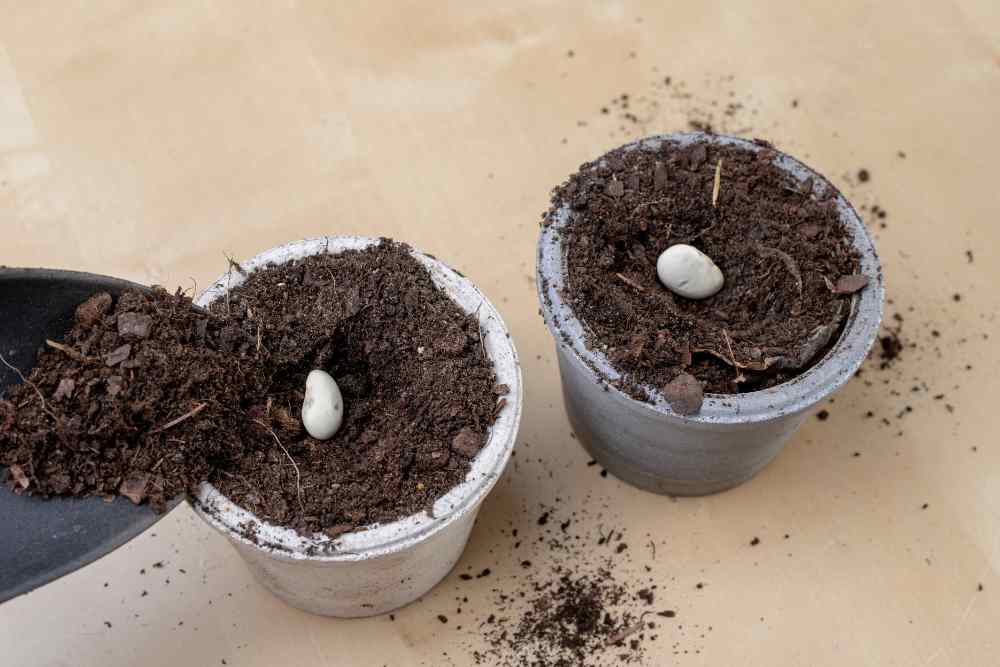
Small pots are a delightful and versatile option for small-space gardening, offering a charming and compact way to nurture your green thumb. These little containers may be small, but they pack a big punch when adding greenery and life to your living spaces. Small pots can turn any nook into a beautiful and inviting mini-garden, whether you have a tiny windowsill, a small balcony, or just a small corner.
Small pots come in various materials, shapes, and colors, quickly incorporating them into any decor. They are perfect for planting individual plants or creating lovely arrangements of multiple pots. With their portability, you can easily rearrange and redesign your small garden to suit your mood or the changing seasons.
– Choosing the Right Small Pots
When selecting small pots, consider both aesthetics and functionality. Choose pots that complement your overall decor and the style of your chosen plants. Consider materials like ceramic, terracotta, plastic, or even repurposed containers. Ensure the pots have drainage holes to prevent waterlogging and promote healthy root growth.
– Best Plants for Small Pots
Small pots are ideal for growing various plants, including herbs, flowers, succulents, and compact vegetables. Herbs like basil, mint, thyme, and chives thrive in small pots and provide fresh flavors for culinary adventures.
Colorful flowering plants such as pansies, violas, and mini-roses add a touch of beauty to your small garden. With their low maintenance needs, Succulents are excellent for beginners in gardening. Compact vegetables like cherry tomatoes, lettuce, and radishes can flourish in small pots, providing fresh produce even in limited spaces.
– Grouping Small Pots
One of the joys of small pots is the ability to group them, creating captivating displays that elevate the visual appeal of your small garden. Group pots of different sizes and heights to add depth and dimension to your arrangement. Consider combining plants with varying colors and textures to create eye-catching compositions. Choose a specific color scheme or plant theme for your small pot grouping to create a cohesive look.
– Indoor and Outdoor Small Pots
Small pots are not limited to outdoor gardening; they can also enchant your indoor spaces. Place them on windowsills, shelves, or tabletops to bring the beauty of nature indoors. Indoor small pots add greenery, improve indoor air quality, and create a calming and refreshing atmosphere.
– Terrariums: Tiny Ecosystems in Small Pots
Consider creating a terrarium for a unique and fascinating twist on small pots. Terrariums are mini-ecosystems enclosed in glass containers, often requiring little maintenance. They usually feature low-maintenance plants like ferns, mosses, and air plants. Terrariums add a touch of whimsy and serve as captivating conversation starters.
– Plant Care in Small Pots
Maintaining the health of the plants in the small pots requires proper maintenance. Monitor your plants’ watering needs, and adjust the frequency based on their specific requirements. Provide adequate sunlight for sun-loving plants while ensuring shade for those that prefer indirect light. Regularly inspect the plants for signs of pests or diseases and take appropriate action if needed.
5. Repurposed Containers
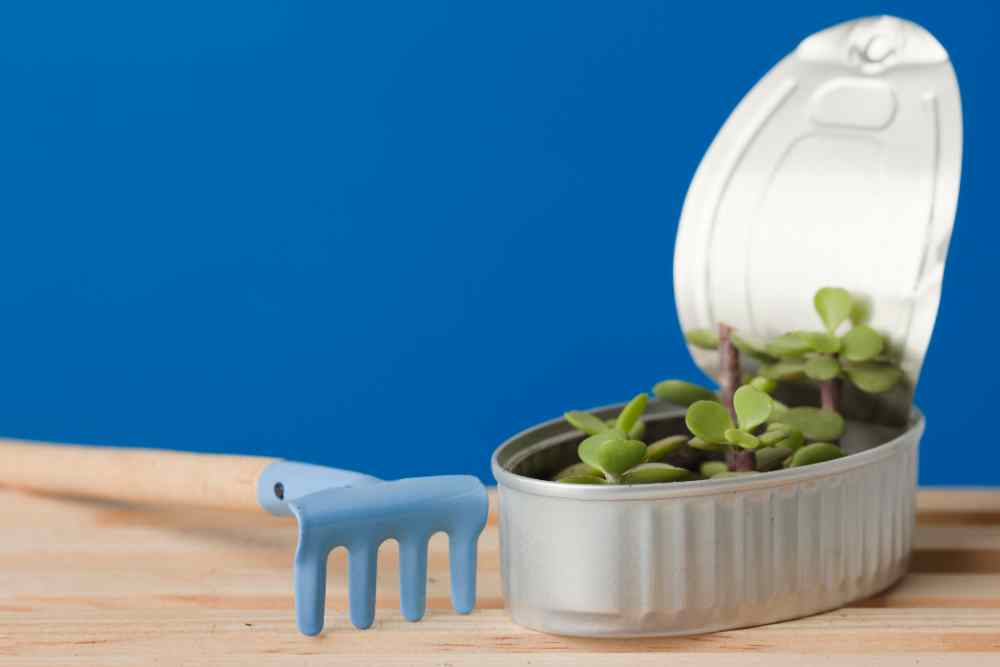
Repurposed containers offer a unique and eco-friendly approach to gardening in small spaces. By giving new life to old and discarded items, you can create a sustainable and charming garden that beautifies your small space and contributes to environmental conservation. Get creative with repurposed containers and turn everyday objects into delightful planters that add character and personality to your garden.
Repurposing gardening containers reduces waste, promotes recycling, and adds a distinctive touch to your garden. Old items that might otherwise end up in landfills can be transformed into plant homes, creating a conversation-worthy and sustainable green space. The possibilities for repurposing containers are endless, from teapots, colanders, and tin cans to broken pots and wooden crates.
– Selecting the Right Repurposed Containers
When choosing containers for repurposing, consider their size, shape, and material. Ensure they are clean and free from harmful substances that could negatively impact your plants. Containers with drainage holes or the ability to add them are preferable to maintain healthy root systems. Additionally, consider the weight and sturdiness of the containers to ensure they can support the weight of the plants and soil.
– Creative Ideas for Repurposed Containers
The options for repurposed containers are limited only by your imagination. Here are some creative ideas to get you started:
- Teapot Planters: Old teapots with missing lids or damaged spouts can be transformed into whimsical planters. Fill the spout with bright flowers or trailing vines and let them flow down like a small fountain.
- Colander Gardens: Turn vintage colanders into charming hanging planters. The drainage holes in the colander allow excess water to escape, making them ideal for planting herbs or small flowers.
- Tin Can Planters: Clean and paint tin cans to add a splash of color to your garden. Tin cans are perfect for growing small herbs or succulents and can be easily attached to walls or fences.
- Broken Pot Gardens: Don’t let broken pots go to waste! Use the larger pieces to create tiers in a new pot, giving it a unique and whimsical appearance. Plant different flowers or herbs in each layer for a cascading effect.
- Wooden Crate Planters: Old wooden crates can be stacked to create a multi-level garden display. Fill each level with plants of your choice to give your garden a simple and natural feel.
6 Steps for Creating Repurposed Container Gardens
- Clean and Prepare: Clean and disinfect the containers to ensure they are free from contaminants that could harm your plants.
- Add Drainage: If the containers don’t have drainage holes, drill or poke holes in the bottom to prevent waterlogging.
- Choose Appropriate Plants: Select plants that suit the size and conditions of the containers. Herbs, succulents, and small flowers are often well-suited for repurposed containers.
- Add Potting Mix: Fill the containers with a high-quality potting mix that provides essential nutrients and promotes healthy plant growth.
- Plant and Arrange: Carefully plant your chosen plants in the containers, arranging them to create an aesthetically pleasing display.
- Place and Enjoy: Position your repurposed container gardens in suitable indoor or outdoor spots and enjoy the unique and eco-friendly beauty they bring to your small space.





- 18 Creative Ideas for Stunning Garden Borders - April 16, 2024
- 19 Creative and Cheap Backyard Ideas: Transform Your Backyard on a Budget - April 11, 2024
- 15 Ingenious Kitchen Garden Ideas to Cultivate Freshness Right at Home - April 7, 2024

